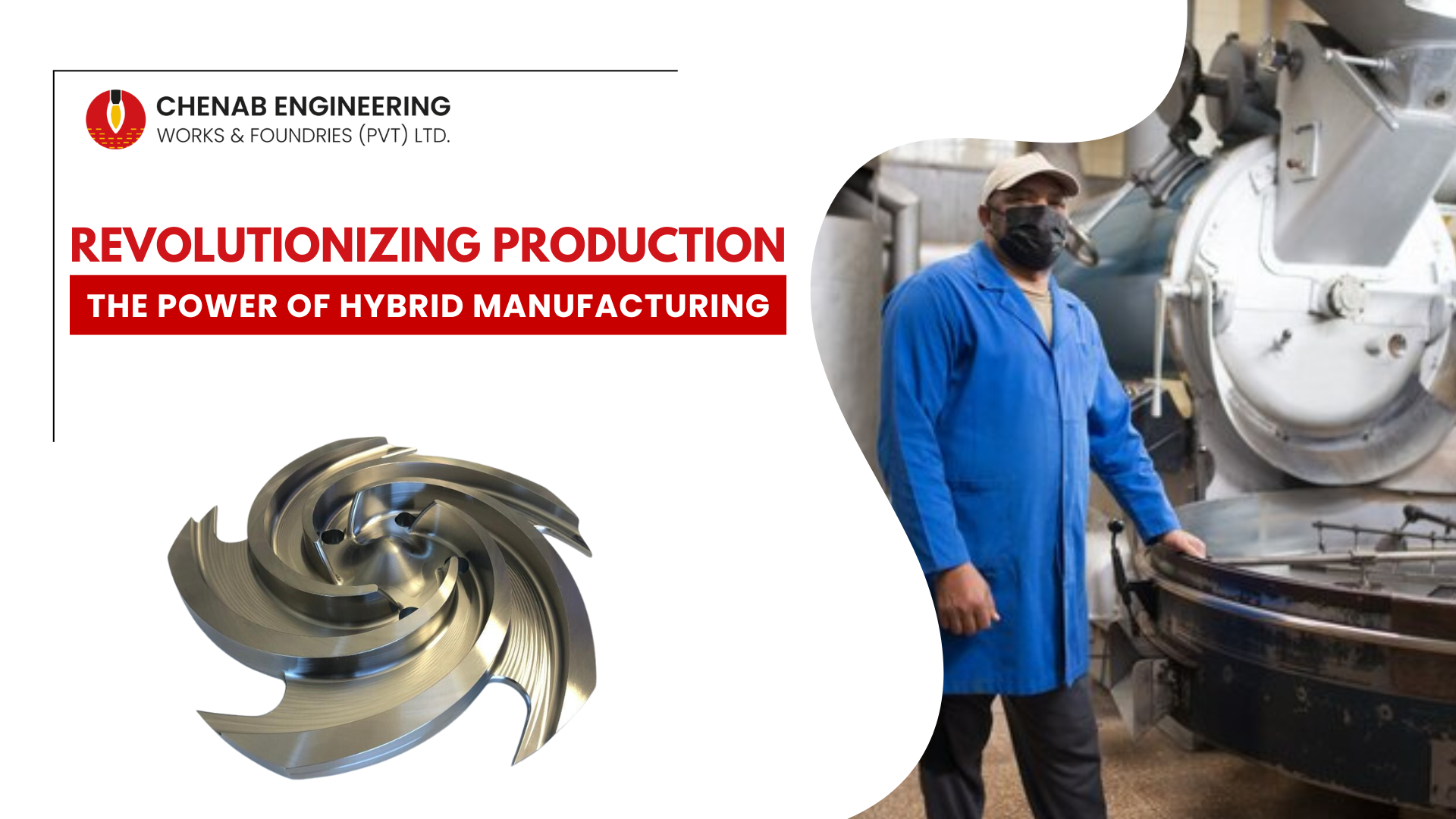Is it possible to blend the time-tested methods of traditional manufacturing with the cutting-edge technology of modern production to achieve exceptional precision and efficiency?
Introduction
In Hybrid Manufacturing, subtractive processes like CNC machining (milling, grinding, rolling, drilling, and turning) and additive manufacturing, also known as 3D printing or AM, are combined, often on the same machines.
Usually, hybrid machines combine a directed energy deposition (DED) head to deposit wire or metal powder with a machining tool, like a lathe. Powder-bed fusion (PBF) or material extrusion may be combined with machining in other manufacturing techniques. Because they can complete both subtractive and additive manufacturing tasks in a single process, these tools are known as one-step hybrid machines.
Hybrid systems and one-step hybrid machines offer many advantages compared to traditional manufacturing processes.
Benefits of Hybrid Manufacturing
Hybrid manufacturing offers several advantages over subtractive or additive machining alone.
Unmatched Versatility: With hybrid manufacturing, you can produce parts with complex geometries that are not achievable with just ordinary methods. You will have a competitive advantage in the market if you can design and manufacture parts that are specifically matched to your needs.
Improved Efficiency: When AM and SM technologies are combined into one process, production time can be greatly shortened, enabling you to launch your products more quickly. Additionally, the footprints of hybrid manufacturing systems are frequently lower, saving valuable floor space in your facility.
Enhanced Quality: Superior surface qualities and part accuracy can be achieved by hybrid manufacturing, which combines subtractive and additive methods. This indicates that the parts you get may not only have an amazing appearance but also function perfectly.
Cost-Effective Production: As hybrid manufacturing uses fewer materials and streamlines production processes, it can produce complicated parts at competitive prices. In the long run, this means you will save more money.
Environmentally Friendly: Utilizing hybrid manufacturing can be a smart move in the direction of a more environmentally friendly production process. You’re not just saving money but also promoting a greener future by cutting down on material waste and energy use. Go ahead and use hybrid manufacturing to make your company more environmentally friendly!
Perfect for Small-Batch Production: In case you need to manufacture prototypes or small quantities of parts, hybrid manufacturing is a great option. Not requiring costly molds, it allows you to develop complex, personalized designs, which makes it an affordable option for small-scale manufacturing runs. Goodbye to high upfront expenses and hello to greater freedom!
Boosting Innovation and Competitiveness: Staying one step ahead of the competition is essential in the fast-paced world of today. Because hybrid manufacturing gives you the freedom to experiment with new materials and design options, it fosters creativity and innovation. You can differentiate yourself from the competition by creating ground-breaking items that push the limits of conventional manufacturing. Get ready to use hybrid manufacturing to lead the way!
Industries that use Hybrid Manufacturing
Hybrid manufacturing is well-suited to many industries, but a few examples include:
Medicine: Hybrid machines can be used to make prosthetics and implants. For example, 3D printing can be used to manufacture custom-fit devices, which may later be finished with precise CNC cutting and polishing.
Aerospace: As the aerospace sector needs complex, lightweight, yet durable parts, hybrid manufacturing is crucial to the sector.
Automotive: There are a ton of parts in automobiles, many of which have complex designs. Automobile makers may be able to make these parts in a single step and with many fewer machines.
Manufacturing Improves Quality Control
Quality control is a strong argument for employing a hybrid production system. The subtractive method adds a last step that strengthens the part’s integrity, while the additive method combines the proper elements without leaving behind residue or other waste items. Professional inspection and assessment of completed items are necessary to guarantee quality control even more. Selecting the right technology and hiring qualified staff are essential to a quality control system’s ability to empower a business.
Conclusion
Hybrid manufacturing represents a groundbreaking advancement in production technology that has the potential to fundamentally transform your manufacturing processes. This cutting-edge approach seamlessly combines the strengths of both additive and subtractive manufacturing methods, allowing you to fabricate highly adaptable, top-quality components customized to your exact specifications. By harnessing this innovative approach, you can achieve significant time and cost savings while also minimizing environmental impact.
So, why wait? Unlock the potential of manufacturing with cutting-edge hybrid technology and witness your manufacturing business reach unprecedented levels of success!





